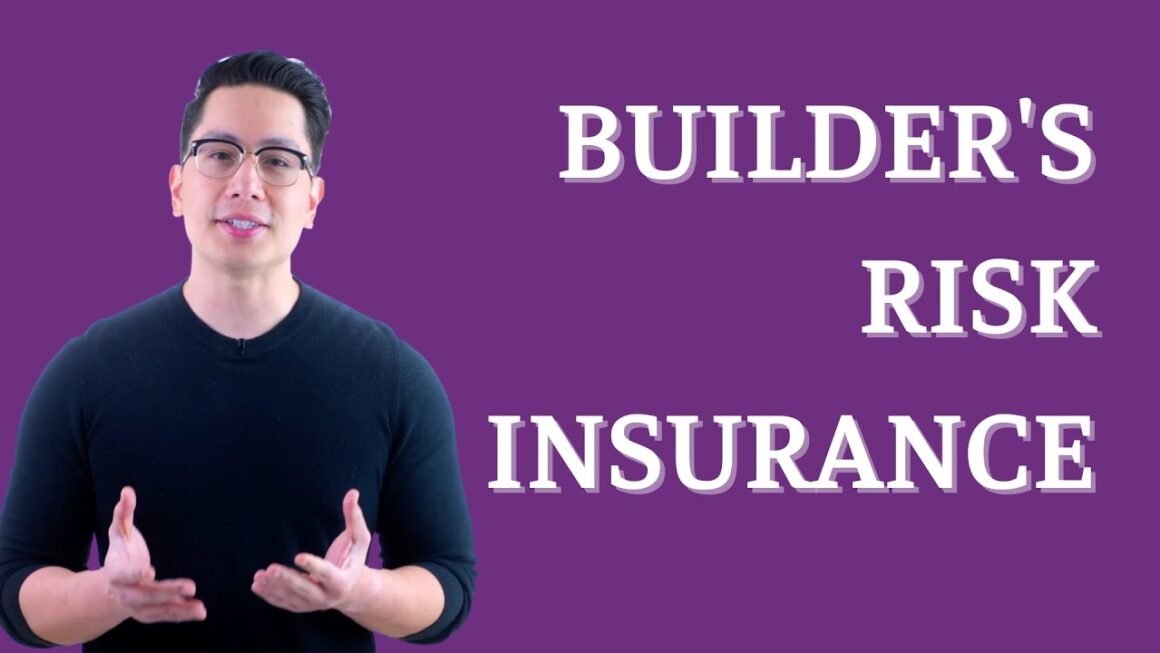When embarking on a construction project, there are various risks and uncertainties that can impact the successful completion of the project. These risks can range from natural disasters to theft, vandalism, or even simple human errors. To safeguard your investment and mitigate these potential setbacks, Builder’s Risk Insurance is an invaluable tool. In this comprehensive guide, we’ll delve into the definition, coverage, and cost of Builder’s Risk Insurance, shedding light on its importance and how it can protect your construction project.
What Is Builder’s Risk Insurance?
Builder’s Risk Insurance, also known as Course of Construction Insurance, is a specialized type of property insurance designed to provide coverage for structures that are under construction or renovation. This insurance policy offers protection for the project owner, general contractor, subcontractors, and other stakeholders involved in the construction process. It safeguards against financial losses resulting from a wide range of risks that may occur during the construction period.
The coverage typically begins when construction starts and ends when the project is completed and ready for occupancy. Builder’s Risk Insurance can be tailored to suit the specific needs of a project, making it a flexible and versatile option for construction stakeholders.

Coverage Offered by Builder’s Risk Insurance
Builder’s Risk Insurance offers a wide array of coverage options that protect against potential risks during construction. Here are some of the key components of coverage:
1. Property Damage:
Builder’s Risk Insurance covers damage to the insured structure and its components. This includes the building itself, as well as materials, fixtures, and equipment that are part of the construction project. Covered perils typically include fire, vandalism, theft, lightning, wind, hail, and certain natural disasters.
2. Soft Costs:
In addition to physical damage, Builder’s Risk Insurance can also cover soft costs, such as financing, architectural and engineering fees, and legal expenses. These costs are typically related to project delays or disruptions caused by covered perils.
3. Business Income:
If a covered peril results in a delay in the project’s completion, Builder’s Risk Insurance can also provide coverage for lost income and additional expenses incurred as a result of the delay. This can help keep your project on track and your budget intact.
4. Equipment and Tools:
Builder’s Risk Insurance can extend coverage to construction equipment, machinery, and tools that are used on the job site. This protection can be particularly important, as construction equipment is susceptible to theft and damage.
5. Debris Removal:
In the aftermath of a covered loss, there is often a need to remove debris and clean up the construction site. Builder’s Risk Insurance can cover the cost of debris removal, ensuring a smooth and safe continuation of the project.
6. Site Fire Protection:
Some policies also cover expenses related to fire protection on the construction site, including the installation of fire hydrants, alarms, or fire extinguishing systems.
7. Ordinance or Law Coverage:
This coverage addresses the costs associated with complying with local building codes and ordinances, which may have changed since the project commenced.
Cost of Builder’s Risk Insurance
The cost of Builder’s Risk Insurance can vary significantly based on several factors. It’s important to understand these variables when obtaining a policy to ensure you get the right coverage at a reasonable price. Here are some factors that influence the cost:
1. Project Value:
The overall value of the construction project plays a substantial role in determining the cost of insurance. The higher the project’s value, the more you can expect to pay for coverage. This is because a higher-value project presents a greater potential financial risk in the event of a claim.
2. Project Duration:
The length of the construction project is another key factor in pricing. Longer projects generally require more coverage and are therefore more expensive to insure. The insurance cost is typically calculated based on the duration of the policy.
3. Location:
The geographic location of the construction site can impact the cost of Builder’s Risk Insurance. Areas prone to natural disasters or with higher crime rates may have higher insurance premiums.
4. Construction Type:
The type of construction can influence the cost as well. Projects involving more complex or riskier construction methods may incur higher insurance costs.
5. Deductible:
Choosing a higher deductible can lower your insurance premium, but it also means you’ll be responsible for a larger share of the costs in case of a claim. Balancing the deductible amount with your budget and risk tolerance is crucial.
6. Policy Extensions:
Opting for additional coverage or policy extensions, such as flood or earthquake coverage, will increase the overall cost of the policy.
Why Builder’s Risk Insurance is Essential
Builder’s Risk Insurance is essential for several reasons:
1. Risk Mitigation:
It protects your investment by covering a wide range of risks that can occur during construction. This helps you avoid significant financial losses that could otherwise jeopardize the project’s success.
2. Contractual Obligations:
Many construction contracts require the project owner or general contractor to provide Builder’s Risk Insurance. Failing to do so can result in contractual violations and legal issues.
3. Peace of Mind:
Knowing that your project is protected against unforeseen events provides peace of mind and allows you to focus on the construction process without worrying about potential financial setbacks.
4. Lender Requirements:
If you are financing your construction project through a lender, they may insist on Builder’s Risk Insurance as a condition of the loan.
5. Cost-Effective:
While there is a cost associated with Builder’s Risk Insurance, it is often more cost-effective to pay for insurance than to cover the expenses of a significant loss out of pocket.
Conclusion
Builder’s Risk Insurance is a vital tool for anyone involved in construction projects. It offers comprehensive coverage for a variety of risks that can occur during construction, from property damage to soft costs and business income. The cost of Builder’s Risk Insurance depends on several factors, including project value, location, and project duration. Ultimately, the investment in this insurance provides peace of mind, risk mitigation, and a cost-effective way to protect your construction project from unexpected setbacks. It’s a prudent choice that ensures your project’s successful completion and your financial security.





